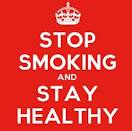 According to the New York State of Health (NYSOH) Department, over 225,000 New Yorkers have newly enrolled for health coverage for 2015. This number does not include re-enrollers. Of this number, 142,187 is covered by Medicaid and 83,057 by private insurers. According to Donna Frescatore, NYSOH Executive Director, the numbers “continue to increase steadily.” The intention is to continue this effort “to reach as many New Yorkers as possible in our drive to get them covered before February 15.”
According to the New York State of Health (NYSOH) Department, over 225,000 New Yorkers have newly enrolled for health coverage for 2015. This number does not include re-enrollers. Of this number, 142,187 is covered by Medicaid and 83,057 by private insurers. According to Donna Frescatore, NYSOH Executive Director, the numbers “continue to increase steadily.” The intention is to continue this effort “to reach as many New Yorkers as possible in our drive to get them covered before February 15.”
However, there has been some backlash to the system. Those who advocate a universal single-payer system, argue that the problem with the current model is that client access to care is left up to the “mercy of for-profit insurance companies.”
Thus Richard Gottfried, D-Manhattan Assemblyman is sponsoring a legislation to establish a “universal single-payer healthcare system in New York state.” He said that this would render comprehensive health coverage available for all New Yorkers and would be publicly funded. He argues that this system could save New Yorkers more than $20bn annual as they would not have to pay for insurance company administrative profit and personnel.
Furthermore, there would be no need to hire a whole slew of admin to deal with insurance companies to pay up. Right now that is already built into the health care costs and thus it wouldn’t be an additional cost for the New York health system.








